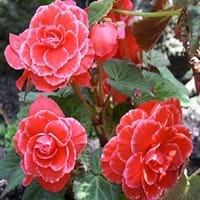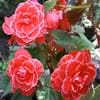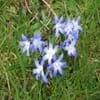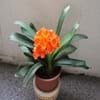Life Span
Perennial
Perennial
Type
Bulb or Corm or Tuber
Flowering Plants, Fruits, Trees
Origin
Not Available
Anatolia, Asia, Europe, Iran, Maghreb, Morocco, Norway, The Hiamalayas
Types
'Bellagio Apricot' begonia, 'Bellagio Blush' begonia, 'Bellagio Pink' begonia
Flowering Cherries, Sour Cherries, Sand Cherries, Sweet Cherries, Capulin Cherries
Habitat
Subtropical climates, Tropical regions
Forest edges, Wild, Woods
USDA Hardiness Zone
9-15
4-8
Sunset Zone
21,22
4, 5, 6, 7, 15, 16, 17
Habit
Clump-Forming
Upright/Erect
Flower Color
Salmon
White
Flower Color Modifier
Bicolor
Not Available
Fruit Color
Not Available
Red
Leaf Color in Spring
Green
Dark Green
Leaf Color in Summer
Light Green
Orange
Leaf Color in Fall
Several shades of Green
Orange
Leaf Color in Winter
Light Green
Orange
Leaf Shape
Heart-shaped
Oblong
Plant Season
Summer, Fall
Spring, Summer
Sunlight
Partial shade
Full Sun, Partial shade
Growth Rate
Medium
Medium
Type of Soil
Loam, Sand
Loamy, Well drained
The pH of Soil
Acidic, Neutral
Slightly Acidic
Soil Drainage
Well drained
Average
Bloom Time
Early Summer, Summer, Late Summer
Early Spring, Spring
Tolerances
Not Available
Heat And Humidity, Not Available
Where to Plant?
Container, Ground, Pot
Ground
How to Plant?
Seedlings, Transplanting
Grafting, Seedlings, Transplanting
Plant Maintenance
Medium
Medium
Watering Requirements
Over-watering can cause leaf problems or root diseases, Requires regular watering, Water Deeply
Never Over-water, Over-watering can cause leaf problems or root diseases, Prefer drip-irrigation instead of Over-head watering, Water twice a day in the initial period
In Summer
Lots of watering
Lots of watering
In Spring
Moderate
Moderate
In Winter
Average Water
Average Water
Soil pH
Acidic, Neutral
Slightly Acidic
Soil Type
Loam, Sand
Loamy, Well drained
Soil Drainage Capacity
Well drained
Average
Sun Exposure
Partial shade
Full Sun, Partial shade
Pruning
Cut or pinch the stems, No pruning needed in the early stages, Prune if you want to improve plant shape, Prune to control growth, Remove dead or diseased plant parts
Don't prune in the fall, Prune if you want to improve plant shape, Prune in late winter, Remove dead or diseased plant parts, Remove deadheads
Fertilizers
All-Purpose Liquid Fertilizer
All-Purpose Liquid Fertilizer
Pests and Diseases
Aphids, Bacterial leaf spot, Botrytis Blight, Foliar nematode, Powdery mildew, Pythium rot, Rhizoctonia crown rot
Aphids, Bacterial Canker, Black Knot, Brown Rot, Caterpillars
Plant Tolerance
Drought
Drought
Flower Petal Number
Double
Not Available
Foliage Texture
Coarse
Not Available
Foliage Sheen
Glossy
Not Available
Attracts
Not Available
Birds
Allergy
Asthma
Swelling in the face
Aesthetic Uses
Beautification
Showy Purposes
Beauty Benefits
Not Available
Not Available
Environmental Uses
Air purification
Air purification
Medicinal Uses
Bronchitis, Candidiasis, Cold, Digestive disorders, Dysentry, Haemoptysis, Liver problems, Menstrual Disorders, Scrofula, Swelling
Arthritis, Gout, Kidney problems, Rheumatoid arthritis, Swelling
Part of Plant Used
Whole plant
Flowers, Fruits
Other Uses
Used as Ornamental plant
Wood is used for making furniture
Used As Indoor Plant
Yes
No
Used As Outdoor Plant
Yes
Yes
Garden Design
Bedding Plant, Container, Hanging Basket, Houseplant, Tropical
Not Available
Botanical Name
BEGONIA 'Fortune Salmon'
Prunus avium
Common Name
Fortune Salmon Tuberous Begonia, Tuberous Begonia
Cherry Tree
In Hindi
tuberous बिगोनिया
चेरी का पेड़
In German
Knollenbegonie
Kirschbaum
In French
Bégonia tubéreux
Cerisier
In Spanish
Begonia tuberosa
Cerezo
In Greek
Οζώδους Begonia
κερασιά
In Portuguese
tuberosa Begonia
árvore de cereja
In Polish
Begonia guzowate
wiśniowe drzewo
In Latin
Morbus Begonia
Cherry
Phylum
Magnoliophyta
Magnoliophyta
Class
Magnoliopsida
Magnoliopsida
Order
Cucurbitales
Rosales
Family
Begoniaceae
Rosaceae
Clade
Angiosperms, Eudicots, Rosids
Angiosperms, Eudicots, Rosids
Tribe
Not Available
Not Available
Subfamily
Not Available
Not Available
Number of Species
Not Available
Season and Care of Tuberous Begonia and Cherry Tree
Season and care of Tuberous Begonia and Cherry Tree is important to know. While considering everything about Tuberous Begonia and Cherry Tree Care, growing season is an essential factor. Tuberous Begonia season is Summer and Fall and Cherry Tree season is Summer and Fall. The type of soil for Tuberous Begonia is Loam, Sand and for Cherry Tree is Loamy, Well drained while the PH of soil for Tuberous Begonia is Acidic, Neutral and for Cherry Tree is Slightly Acidic.
Tuberous Begonia and Cherry Tree Physical Information
Tuberous Begonia and Cherry Tree physical information is very important for comparison. Tuberous Begonia height is 20.30 cm and width 20.30 cm whereas Cherry Tree height is 17.50 cm and width 17.50 cm. The color specification of Tuberous Begonia and Cherry Tree are as follows:
Tuberous Begonia flower color: Salmon
Tuberous Begonia leaf color: Green
Cherry Tree flower color: White
- Cherry Tree leaf color: Dark Green
Care of Tuberous Begonia and Cherry Tree
Care of Tuberous Begonia and Cherry Tree include pruning, fertilizers, watering etc. Tuberous Begonia pruning is done Cut or pinch the stems, No pruning needed in the early stages, Prune if you want to improve plant shape, Prune to control growth and Remove dead or diseased plant parts and Cherry Tree pruning is done Don't prune in the fall, Prune if you want to improve plant shape, Prune in late winter, Remove dead or diseased plant parts and Remove deadheads. In summer Tuberous Begonia needs Lots of watering and in winter, it needs Average Water. Whereas, in summer Cherry Tree needs Lots of watering and in winter, it needs Average Water.





